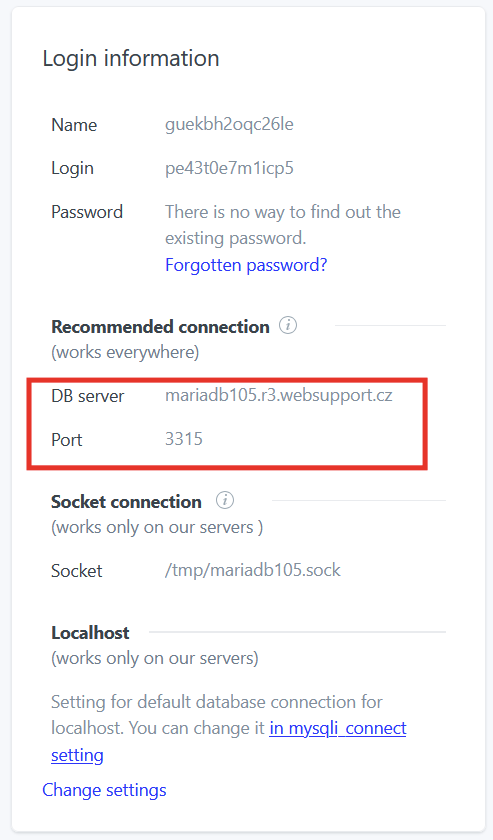If you need to change a database connected to CMS Joomla, the change will only take few minutes. Follow the steps bellow.
1. Log in to the FTP
- For login to FTP you can use FTP client like FileZilla or Total Commander or our web interface ftp.active24.cz.
2. Go to directory where the Joomla is installed.
- If you have Joomla installed at the domain domain.tld it is located in the “web” directory
- If you have Joomla on any of your subdomains (e.g. blog.yourdomain.tld), go to the sub directory and there locate your subdomain directory (e.g. /sub/blog)
3. Search for file configuration.php and open it. We recommend to make a copy first, just in case.
4. Some files have different code in the configuration file. There are 2 options.
OPTION A
Locate these lines of code:
var $host = 'mariadb101.websupport.sk:3312'; ---------> Enter a hostname of the new database from administration var $user = '82whGrin014z'; ---------> Replace "82whGrin014z" with a new database user var $db = '82whGrin014z'; ---------> Replace "82whGrin014z" with new database name
Password to the database in Joomla is in the configuration file, locate these two lines and change password.
var $session_handler = 'database'; var $password = '1hFL2iM2IXrG'; ---------> Instead of "1hFL2iM2IXrG" enter new password
OPTION B
Locate these lines of code:
public $host = 'mariadb101.websupport.sk:3312'; ---------> Enter a hostname of the new database from administration public $user = '82whGrin014z'; ---------> Replace "82whGrin014z" with a new database user public $password = '1hFL2iM2IXrG'; ---------> Replace "1hFL2iM2IXrG" with a new password public $db = '82whGrin014z'; ---------> Replace "82whGrin014z" with a new database name
List of hostname (DB server) for each database can be found in the administration
- Select your domain in the Services tab
- Go to Databases section in the left menu
- Click on the name of your database in the list
You can see all login information in the left box:

